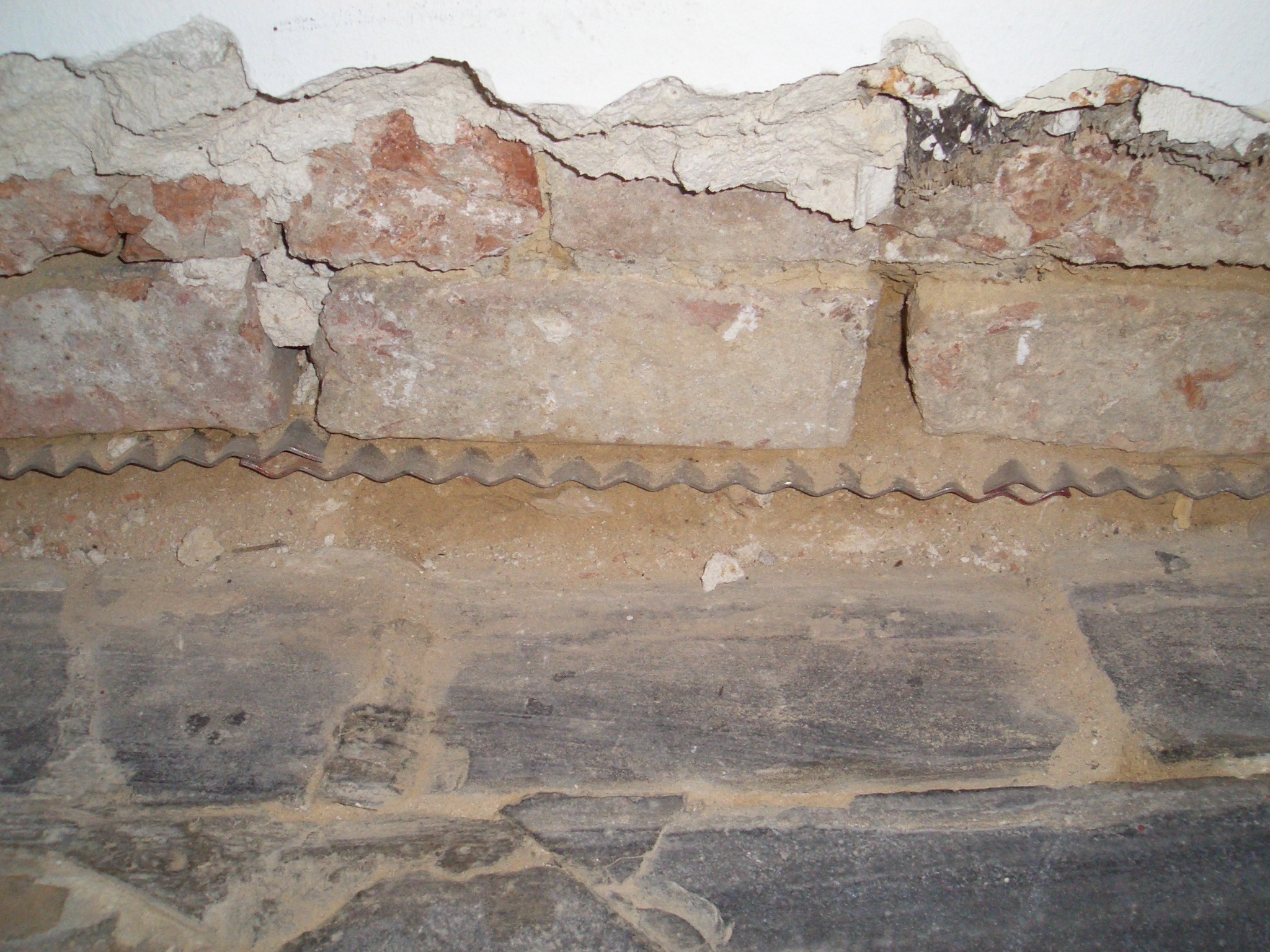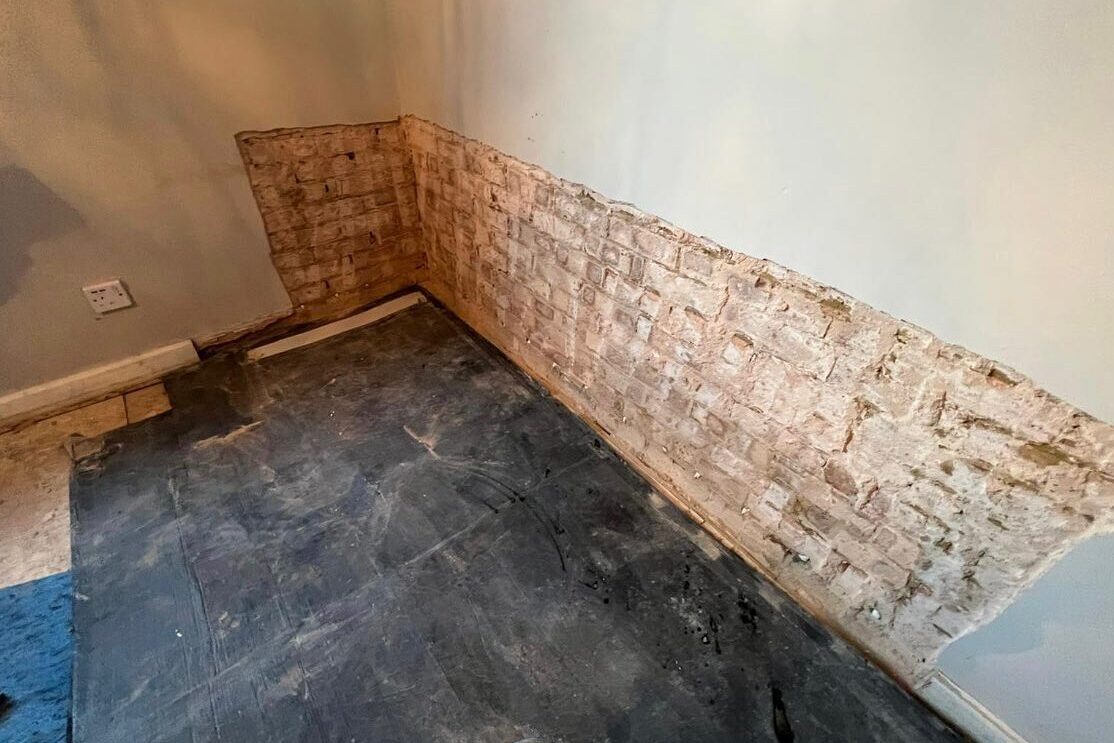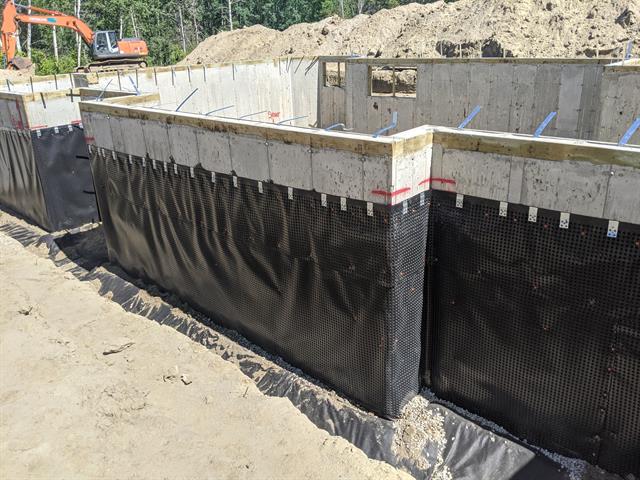Exploring the Numerous Methods and Solutions for Effective Damp Proofing
Moisture in structures poses significant obstacles to both structural integrity and interior air high quality. Various methods and options have emerged to combat this pervasive issue. From conventional damp-proof membrane layers to innovative chemical treatments, each approach offers one-of-a-kind benefits. Comprehending these alternatives is crucial for effective dampness control. Selecting the right option depends on details building problems and demands, triggering additional exploration into the most effective moist proofing strategies readily available.
Recognizing the Sources Of Dampness
Although dampness can develop from various sources, recognizing these causes is essential for efficient remediation. Commonly, moisture originates from 3 primary resources: climbing moist, permeating damp, and condensation. Rising wet happens when groundwater travels up via porous products, such as brick or stone, often as a result of an absence of a reliable obstacle (damp removal newcastle). Passing through wet is normally triggered by outside variables, including roof leaks, defective rain gutters, or harmed wall surfaces, enabling water to penetrate a residential property. Condensation, on the other hand, results from excess moisture airborne, typically worsened by poor ventilation and temperature level differences, causing water droplets developing on surfaces. Recognizing these underlying issues is crucial, as each sort of dampness calls for a customized strategy for removal. Proper assessment helps in establishing the most reliable remedies, ultimately protecting the structural stability of a structure and improving indoor air top quality
Standard Damp-Proof Membrane Layers

Chemical Damp-Proofing Solutions
Chemical damp-proofing remedies provide an innovative approach to avoid moisture breach in buildings. These methods typically include the application of fluid chemicals that penetrate stonework and form an obstacle against rising damp. Typically made use of chemicals consist of silanes, siloxanes, and other water-repellent agents that react with surface products to develop a hydrophobic layer.The application procedure usually calls for boring holes into the wall surfaces, injecting the chemical remedy, and enabling it to heal. This approach is specifically helpful for older frameworks where standard damp-proof membrane layers might be impractical. Additionally, chemical damp-proofing can be much less turbulent and more affordable than considerable remodelling projects.While efficient, these options rely on proper application and ecological conditions for peak performance. Regular upkeep and monitoring are vital to assure the long life of the damp-proofing treatment. In general, chemical damp-proofing stands for a versatile alternative for protecting structures against moisture-related damage
Tooth Cavity Wall Building And Construction Strategies
Cavity wall surface building and construction strategies provide various benefits, especially in dampness control and energy performance. By incorporating an air space between 2 layers of stonework, these walls efficiently alleviate water ingress while enhancing insulation. This mix not only secures structures from moisture but additionally adds to reduced energy usage.
Benefits of Cavity Walls
When thinking about effective damp proofing approaches, the benefits of tooth cavity wall surfaces stand out prominently. Dental caries walls contain two separate layers, developing an air gap that properly reduces moisture penetration. This style reduces the threat of wetness, as the outer wall acts as an obstacle against rain and water ingress. In addition, cavity walls boost thermal insulation, which adds to power efficiency by lowering warm loss. They additionally offer sound insulation, aiding to develop a quieter indoor setting. Furthermore, the air gap permits air flow, which aids in wetness control and lowers the probability of mold development. These benefits not just boost the general convenience of a building but additionally contribute to its longevity and architectural integrity.
Dampness Control Techniques
Effective wetness control strategies are essential in tooth cavity wall building and construction to ensure lasting defense against dampness. One key approach entails the consolidation of weep holes, which facilitate water drain from the cavity, preventing buildup. In addition, the usage of breathable membranes can aid manage dampness levels while allowing entraped vapor to run away. Correct positioning of insulation is also important, as it must not obstruct drainage courses. Guaranteeing that the outer fallen leaves of the dental caries wall surface are created with waterproof materials boosts total sturdiness. Normal maintenance checks are necessary to identify any type of blockages or damages early, guarding the structure's honesty. Inevitably, a combination of these techniques forms a durable protection versus dampness intrusion in tooth cavity walls.
Insulation and Power Efficiency
Insulation plays a vital duty in boosting energy efficiency within dental caries wall surface building and construction. By incorporating shielding products, these wall surfaces produce a thermal obstacle that reduces warm loss and decreases energy consumption. Efficient insulation not just helps maintain a secure indoor temperature however likewise alleviates the danger of wetness, as it avoids condensation within the wall surface cavity. Various techniques, such as making use of rigid foam boards or mineral woollen, can be utilized to achieve excellent insulation efficiency. In addition, proper installment is important to assure that gaps and spaces are minimized, which can or else compromise energy performance. Ultimately, a well-insulated dental caries wall surface adds substantially to overall sustainability and lowers cooling and heating costs for homeowners.
Exterior Damp Proofing Techniques
Outside wet proofing methods are important for protecting frameworks from moisture infiltration. 2 effective strategies include the application of waterproof membranes and the installation of French drains pipes. These options aid mitigate water build-up and preserve the stability of structures.
Waterproof Membrane Application
While numerous techniques exist for preventing wetness ingress, the application of water-proof membrane layers stays a very efficient outside damp proofing strategy. These membrane layers are typically made from materials such as polyethylene, rubber, or customized bitumen, offering a robust barrier versus water penetration. The installment process includes using the membrane layer to the exterior surfaces of wall surfaces or foundations, guaranteeing total insurance coverage to stop leaks. Appropriate bond and securing at joints are essential to making the most of effectiveness. Waterproof membranes can be applied in various forms, consisting of liquid finishes and sheet membrane layers, permitting flexibility based on the certain demands of the framework. This technique not only safeguards structures from wetness however likewise try these out enhances their longevity and structural honesty.
French Drainpipe Installment
One effective approach for handling groundwater and stopping dampness buildup around a structure's foundation is the setup of a French drainpipe. This drainage system consists of a trench loaded with gravel and a perforated pipeline that redirects surface water far from the structure. Correct installation needs cautious planning, guaranteeing that the drainpipe inclines far from the structure to promote perfect water circulation. Furthermore, the place of the drainpipe is important; it must be positioned in locations vulnerable to merging or excess dampness. Regular upkeep, consisting of clearing debris from the gravel and making certain the pipe stays unhampered, is essential for long-lasting efficiency. Inevitably, a well-installed French drainpipe can significantly decrease the danger of water-related problems in structures and basements.
Inside Waterproofing Approaches
Inside waterproofing approaches are important for protecting a structure's interior from moisture infiltration and potential water damage. These approaches typically involve the application of customized materials and strategies created to produce a moisture barrier within the framework. One typical approach is the usage of water resistant coatings or sealers on walls and floorings, which protect against dampness from penetrating surfaces.Additionally, mounting interior water drainage systems, such as sump pumps, can successfully handle water accumulation in basements and crawl rooms. An additional technique involves the usage of vapor barriers, which are installed to hinder moisture motion from the ground right into living spaces.Moreover, addressing any type of fractures learn the facts here now or voids in wall surfaces or foundations with appropriate sealers guarantees a comprehensive protection versus water intrusion. By applying these indoor waterproofing approaches, home owners can significantly minimize the danger of mold and mildew development, structural damages, and other moisture-related issues. Appropriate implementation of these techniques is important for long-term protection and structure stability.
Routine Upkeep and Evaluation Practices
Routine upkeep and inspection methods are essential for ensuring the lasting performance of wet proofing options in any kind of structure. Regular checks enable homeowner to recognize very early indicators of wetness invasion, such as peeling off paint, mold and mildew growth, and stuffy smells. These signs can indicate underlying concerns that require instant attention.Inspections need to be performed a minimum of annually, concentrating on vulnerable locations like basements, creep areas, and exterior wall surfaces. During these analyses, residential property proprietors must examine sealers, drain systems, and air flow to validate they work correctly.Additionally, keeping downspouts and gutters is crucial, as clogged up systems can lead to water build-up near the foundation. Executing a normal maintenance schedule, together with prompt repair work, can considerably extend the life-span of moist proofing procedures and protect the architectural honesty of the building. Positive steps eventually add to the overall health and wellness of the living setting.
Often Asked Concerns
Exactly How Long Does Damp Proofing Normally Last?
The period of damp proofing effectiveness varies, commonly lasting between 20 to half a century. Factors such as application quality, ecological problems, and upkeep practices significantly influence the durability of the moist proofing treatment.

Can I Damp Evidence My Home Myself?
The individual considered the feasibility of do it yourself damp proofing. With proper study and the best materials, it is feasible. However, they also acknowledged the significance of specialist advice to guarantee long-lasting performance and avoid future issues.
What Are the Indicators of Ineffective Damp Proofing?
Signs of inadequate moist proofing include persistent stuffy smells, visible mold growth, peeling off paint, moist spots on walls, and wood degeneration - mould treatment newcastle. Home owners must deal with these problems quickly to avoid additional damages and health and wellness concerns
Does Damp Proofing Affect Indoor Air Top Quality?

Just How Much Does Expert Damp Proofing Expense?
Expert wet proofing expenses differ considerably, normally varying from $1,000 to $5,000 relying on the residential or commercial property's dimension, the level of the damp concern, and chosen techniques. Each situation requires a customized analysis for precise pricing. Generally, dampness originates from 3 primary sources: increasing wet, permeating damp, and condensation. When taking into consideration reliable damp proofing methods, the advantages of tooth cavity wall surfaces stand out informative post prominently. Exterior damp proofing methods are important for shielding frameworks from wetness seepage. While numerous techniques exist for protecting against moisture ingress, the application of water-proof membranes stays a highly reliable external damp proofing method. Indications of inadequate moist proofing include persistent mildewy smells, noticeable mold growth, peeling paint, damp patches on wall surfaces, and wood degeneration.